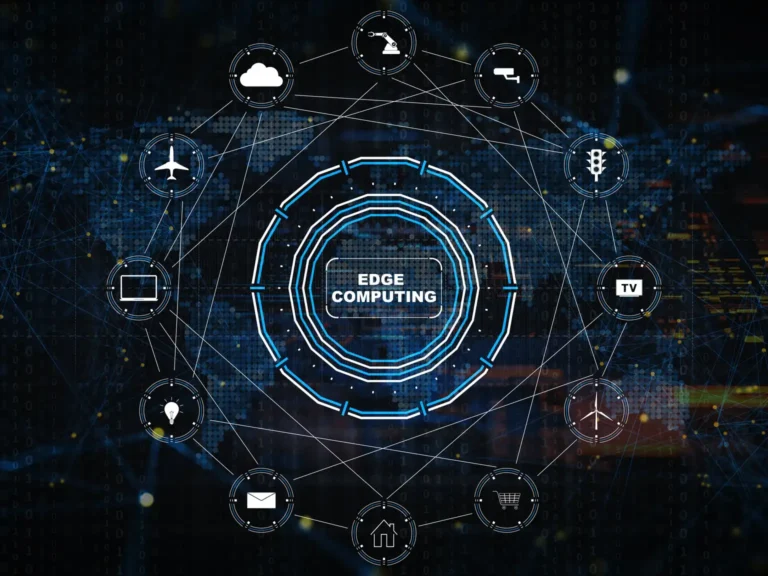In today’s rapidly evolving technological landscape, cloud computing and edge AI are reshaping the future of AI and computer science. Businesses, researchers, and developers are increasingly leveraging these technologies to enhance efficiency, scalability, and real-time processing. But what exactly do these terms mean, and how do they influence modern computing? Let’s dive into it!
Understanding Cloud Computing and Edge AI
Before exploring their impact, it’s crucial to understand what cloud computing and edge AI entail.
Cloud computing refers to the delivery of computing services such as storage, servers, databases, networking, and software over the internet. It enables users to access and process data without relying on local infrastructure. Companies like Amazon Web Services (AWS), Google Cloud, and Microsoft Azure offer powerful cloud computing solutions that support AI-driven applications.
On the other hand, edge AI brings intelligence closer to where data is generated. Instead of relying on centralized cloud servers, edge AI processes data at the “edge” of the network—such as on IoT devices, smartphones, or industrial sensors. This enables real-time decision-making with minimal latency, reducing dependency on cloud connectivity.
AI and Computer Science: The Intersection of Innovation
At its core, AI and computer science go hand in hand. AI is a subfield of computer science that focuses on developing intelligent systems capable of learning, reasoning, and making decisions. From machine learning algorithms to neural networks, AI is deeply rooted in computational principles.
With the rise of cloud computing and edge AI, AI is becoming more accessible and efficient. Cloud platforms provide the massive computational power required to train AI models, while edge AI ensures these models can operate seamlessly in real-world scenarios.
AI is the Theory and Development of Computer Systems
When discussing AI, it’s important to recognize that AI is the theory and development of computer systems that can perform tasks typically requiring human intelligence. These tasks include speech recognition, natural language processing, image recognition, and decision-making.
With cloud computing, AI developers can train and deploy models faster, while edge AI ensures these models function efficiently in real-time applications. For instance, autonomous vehicles leverage edge AI to process sensor data instantly, improving safety and performance.
AI, Computer Science, and Robotics Technology Impact Factor
The AI, computer science, and robotics technology impact factor is profound, affecting industries such as healthcare, finance, manufacturing, and more. AI-powered automation is transforming business operations, while robotics is revolutionizing sectors like logistics and medicine.
- Healthcare: AI-driven diagnostics and robotic surgeries are enhancing medical precision and patient outcomes.
- Finance: AI-powered algorithms analyze financial markets, detect fraud, and optimize investment strategies.
- Manufacturing: Robotics and AI automate production lines, improving efficiency and reducing costs.
The convergence of cloud computing and edge AI further amplifies these advancements by providing scalable infrastructure and real-time decision-making capabilities.
Best Computer for AI and Machine Learning
Choosing the best computer for AI and machine learning is crucial for developers and researchers. Given the computational demands of AI, the ideal system should have a powerful GPU, high RAM capacity, and robust processing power.
Some of the top choices include:
- NVIDIA DGX Station: A high-performance workstation designed for AI research and development.
- Apple MacBook Pro (M1/M2 Chip): Optimized for AI workloads with Apple’s neural engine.
- Dell Precision Workstations: Powerful machines equipped with high-end GPUs for deep learning tasks.
- Custom-Built PCs with NVIDIA RTX GPUs: Affordable and customizable solutions for AI practitioners.
Conclusion
- In summary, cloud computing and edge AI are playing a transformative role in AI and computer science. As AI continues to advance, the integration of cloud and edge computing is making intelligent systems more efficient, scalable, and responsive.
- From the fundamental concept that AI is the theory and development of computer systems to its practical applications in various industries, the synergy between AI, cloud computing, and edge AI is driving unprecedented innovation. Moreover, the AI, computer science, and robotics technology impact factor underscores its significance in shaping the future.
- Finally, selecting the best computer for AI and machine learning ensures seamless development and deployment of AI models, further accelerating progress in the field.
